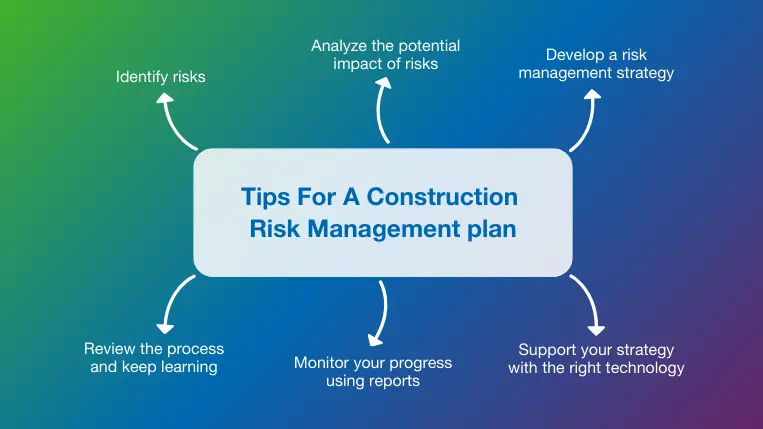Navigating the Challenges: Understanding the Importance of Risk Management
Navigating the Challenges: Understanding the Importance of Risk Management
Blog Article
Checking out the Significance of Risk Management for Effective Decision-Making Strategies
In the complex globe of organization, Risk Management arises as an important factor in the decision-making process. The capacity to determine potential dangers and opportunities, and plan as necessary, can lead to the difference in between success and failing.
Recognizing the Concept of Risk Management
Risk Management, an important component in decision-making, is typically misinterpreted or oversimplified. Typically, it describes the recognition, analysis, and prioritization of dangers to lessen, keep track of, and manage the probability or impact of unfortunate events. It's not just concerning protecting against adverse results, yet also concerning recognizing potential opportunities. Risk Management includes disciplined and structured approaches, utilizing data and insightful evaluations. It needs a thorough understanding of the organization's context, goals, and the possible dangers that might thwart them. From economic uncertainties, lawful responsibilities, strategic Management mistakes, to crashes and natural catastrophes, it resolves different risks. Importantly, efficient Risk Management is not stationary; it's a continual, forward-looking process that evolves with altering conditions.
The Role of Risk Management in Decision-Making Processes
In the world of tactical planning and company operations, Risk Management plays an important duty in decision-making procedures. Risk Management thus ends up being an essential device in decision-making, assisting leaders to make informed selections based on a thorough understanding of the threats entailed. Risk Management offers as an important part in the decision-making processes of any kind of company.

Exactly How Risk Management Boosts Strategic Preparation
In the context of strategic planning, Risk Management plays a pivotal duty. Launching with the recognition of potential dangers, it even more encompasses the application of Risk reduction procedures. The duty of Risk Management is vibrant however not static, as it demands consistent monitoring and adjusting of techniques.
Identifying Potential Dangers

Executing Risk Reduction
Having actually developed the relevance of determining possible risks, the next action is to explore Risk mitigation. This procedure includes developing and carrying out methods to handle determined risks properly. It is an essential element of tactical planning as it improves decision-making by lessening prospective negative results. Risk mitigation methods can vary from Risk evasion, Risk transfer, to risk reduction. Each technique ought to be tailored to the certain Risk, considering its prospective impact and the organization's Risk tolerance. Efficient Risk reduction calls for a deep understanding of the Risk landscape and the prospective effect of each Risk. This understanding makes it possible for organizations to focus on dangers and allot sources successfully, making sure that one of the most significant risks are addressed first.
Surveillance and Adjusting Approaches
Though Risk reduction is a crucial action in strategic preparation, constant monitoring and modification of these methods is just as essential. This ongoing process enables companies to recognize brand-new dangers and reassess existing ones, ensuring the executed approaches stay effective in the ever-changing organization setting. It additionally gives a possibility to assess the success of the Risk Management actions, enabling changes to be made where needed, additional boosting strategic planning. Reliable surveillance and change require using analytics and vital performance indications (KPIs) to measure performance. These tools provide useful data-driven understandings that can inform tactical decision-making. Tracking and readjusting Risk Management approaches is an important component for improving a company's strength and strategic planning.
Situation Researches: Effective Risk Management and Decision-Making
On the planet of business and money, effective Risk Management and Full Report decision-making commonly act as the columns of flourishing business. One such entity is a multinational oil business that reduced financial loss by hedging against varying oil rates. In another instance, a tech start-up grew by determining and approving risky, high-reward strategies in an unpredictable market. A worldwide bank, confronted with regulative unpredictabilities, efficiently navigated the circumstance via positive Risk assessment and dynamic decision-making. These cases highlight the value of sharp Risk Management in decision-making procedures. It is not the lack of Risk, yet the Management of it, that frequently differentiates successful companies from unsuccessful ones. These situations highlight the crucial function of Risk Management in strategic decision-making. importance of risk management.
Devices and Techniques for Reliable Risk Management
Browsing the complex labyrinth of Risk Management needs the best set of devices and strategies. These tools, such as Risk registers and heat maps, aid in recognizing and evaluating prospective dangers. Strategies include both measurable approaches, like sensitivity analysis, and qualitative approaches, such as SWOT analysis. These aid in focusing on threats based upon their possible impact and chance. Risk response strategies, an essential element of Risk Management, include accepting, staying clear of, moving, or mitigating dangers. Tracking and controlling risks, via regular audits and testimonials, ensure that the approaches remain effective. With these methods and devices, decision-makers can browse the complex landscape of Risk Management, thus facilitating educated and reliable decision-making.
Future Fads in Risk Management and Decision-Making Approaches
As we discover the large landscape of Risk Management, it more information becomes apparent that the strategies and tools made use of today will remain to advance. Future trends direct towards an increased dependence on technology, with expert system and artificial intelligence playing substantial duties. These innovations will certainly allow companies to predict potential risks with higher accuracy and make even more informed choices. In addition, there will be a growing emphasis on strength, not simply in taking care of threats but also in bouncing back from adverse scenarios. Lastly, the idea of Risk culture, where every member of an organization understands and involved in Risk Management, will certainly gain much more importance. These patterns herald a more positive and inclusive approach towards Risk Management and decision-making.
Verdict

Risk Management thus becomes an important tool in decision-making, helping leaders to make informed options based on a detailed understanding of the dangers entailed. Risk reduction methods can range from Risk avoidance, Risk transfer, to run the risk of decrease (importance of risk management). Efficient Risk mitigation requires a deep understanding of the Risk landscape and the potential effect of each Risk. Risk reaction techniques, an essential element of Risk Management, entail approving, staying clear of, moving, or mitigating dangers. The idea of Risk society, where every member of a company is mindful and involved in Risk Management, will get extra prominence
Report this page